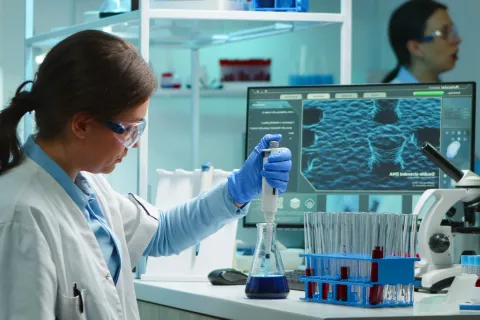Introduction:
In the dynamic realm of pharmaceuticals, the European Medicines Agency (EMA) stands as a guardian of patient safety and efficacy. Its guidelines for Advanced Therapy Medicinal Products (ATMPs) by ensuring good clinical practice provide a robust framework to ensure that innovative therapies meet stringent quality and Regulatory standards. This blog delves into the comprehensive EMA guidelines, offering insights into the intricate process of developing ATMPs for clinical use.
Quality Considerations:
Ensuring the quality of Advanced Therapy Medicinal Products (ATMPs) is paramount for their safety and efficacy. The European Medicines Agency (EMA) mandates stringent control measures, emphasizing thorough characterization, robust manufacturing processes, and stringent quality control strategies.
Characterization of ATMPs involves comprehensive analysis of starting materials, intermediates, and final products to verify their identity, purity, potency, and stability. Manufacturers must establish validated manufacturing processes that yield consistency and reproducibility.
Quality control strategies ensure product integrity and Regulatory compliance. These can be listed as follows:
- Good documentation practices,
- Personnel training
- Facility design
- Equipment qualification.
- Robust analytical methods that ensure identity, purity, potency, and safety for ATMPs.
Compliance with EMA's guidelines is essential to demonstrate the quality and safety of ATMPs, facilitating their approval and commercialization. By adhering to these Regulatory standards, manufacturers can instill confidence in health authorities and healthcare professionals, ensuring patient safety and fostering innovation in advanced therapies.
Non-Clinical Considerations:
Before advancing to clinical trials, ATMPs must undergo rigorous non-clinical studies to assess their safety profile comprehensively. These studies include factors such as pharmacological effects, distribution, metabolism, and potential toxicity. The EMA encourages the use of scientifically justified models and methods to ensure that the data generated from non-clinical studies provides robust support for initiating clinical trials.
Clinical Requirements:
The successful conduct of clinical trials for ATMPs hinges on meticulous planning and execution. The EMA's guidelines provide a comprehensive framework for various aspects of clinical trials, including patient selection, dosing regimens, administration routes, and assessment of clinical responses. Furthermore, given the potentially long-lasting effects of ATMPs, particularly gene therapy products, the EMA guidelines emphasize the need for robust long-term follow-up plans to monitor participants' safety and efficacy outcomes over an extended period.
Regulatory Pathways and Advice:
EMA offers a range of Regulatory pathways and advisory mechanisms to support stakeholders involved in ATMP development.
These include avenues such as:
- Scientific advice
- ATMP product classification
- Certification of quality and non-clinical data (For small and medium-sized enterprises (SMEs).
Early engagement with the EMA is strongly encouraged to clarify Regulatory expectations and optimize development strategies, thereby facilitating smoother transitions throughout the Regulatory process.
Adherence to ethical principles and Good Clinical Practice (GCP) guidelines is paramount at every stage of ATMP development. Sponsors must ensure the protection of trial participants' rights, obtain informed consent, and maintain the integrity of trial data. Additionally, for ATMPs involving genetic modification or the use of human tissues, sponsors must navigate additional ethical considerations with diligence and care to uphold the highest standards of patient safety and ethical conduct.
Importance of Regulatory Partner:
Navigating the intricate Regulatory landscape for ATMPs demands specialized expertise and a nuanced understanding of Regulatory guidelines. Regulatory partners play a pivotal role in supporting organizations through this journey. By providing expert guidance, interpretation of Regulatory requirements, and assistance in implementation, Regulatory partners empower organizations to navigate Regulatory challenges with confidence, ensuring compliance and expediting the development of life changing ATMPs.
Conclusion:
EMA's guidelines for ATMP development serve as a beacon, guiding stakeholders through the complex terrain of Regulatory requirements and quality standards. Compliance with these guidelines is not just a Regulatory necessity but a commitment to patient safety and the advancement of innovative therapies. With the steadfast support of Regulatory partners like Freyr, organizations can navigate the Regulatory landscape with confidence, accelerating the development and delivery of transformative ATMPs to patients in need.










